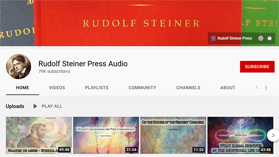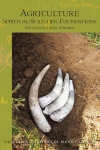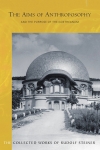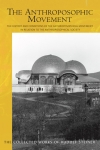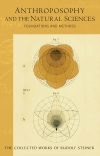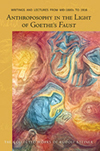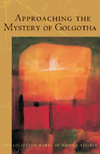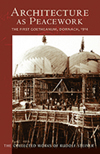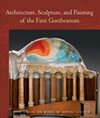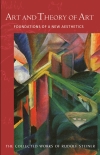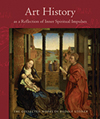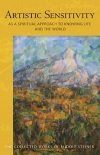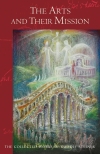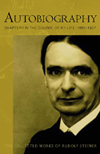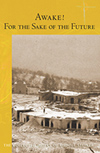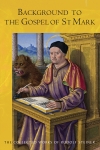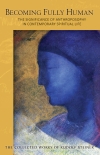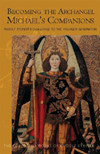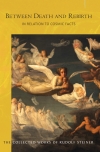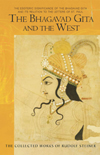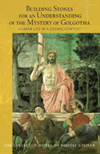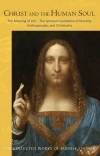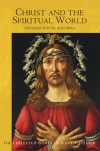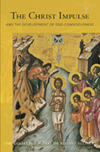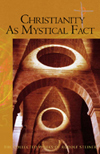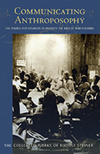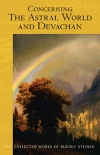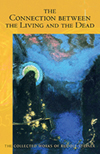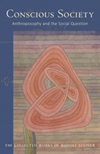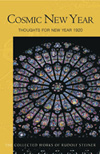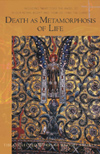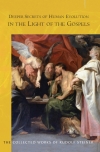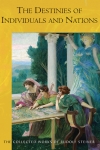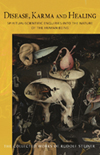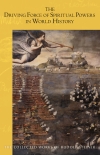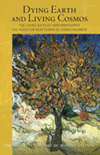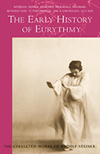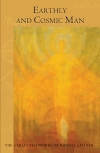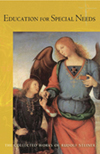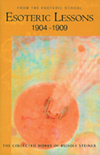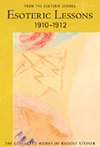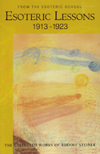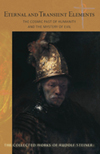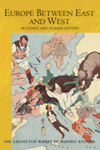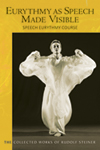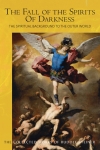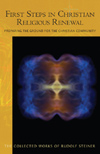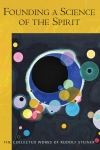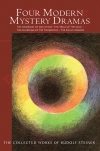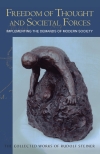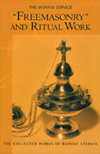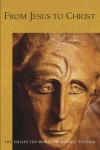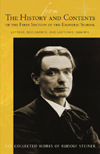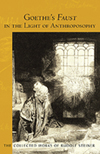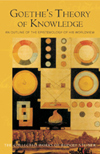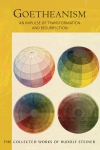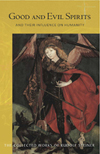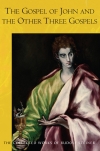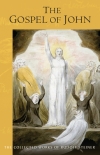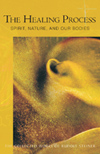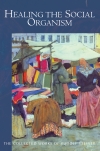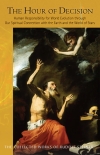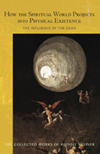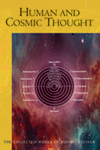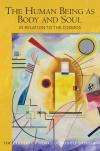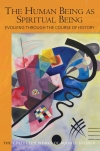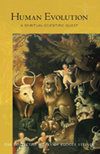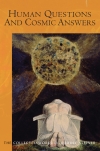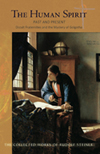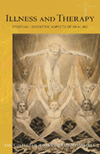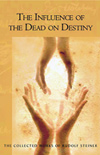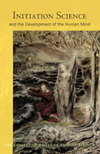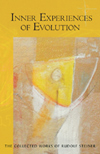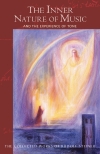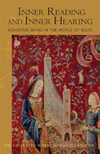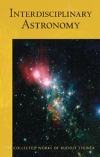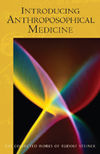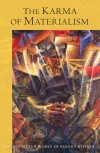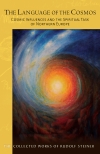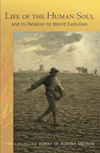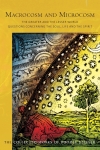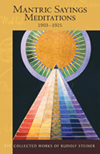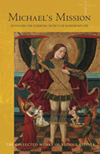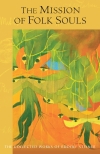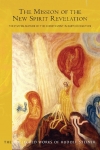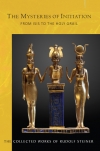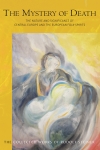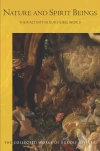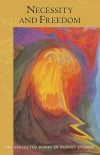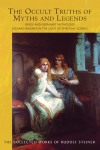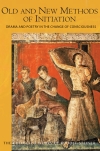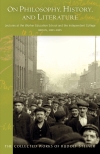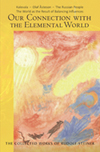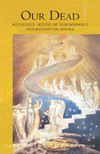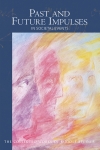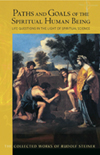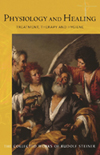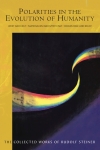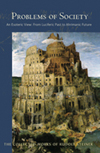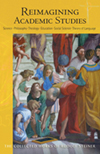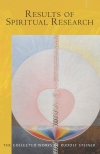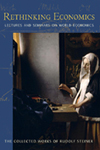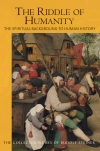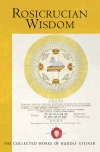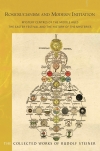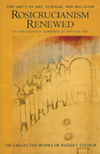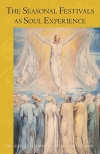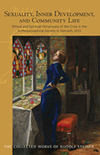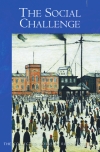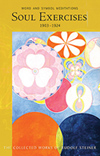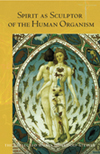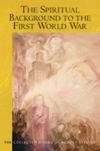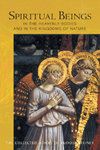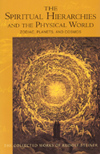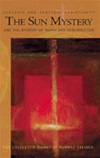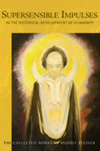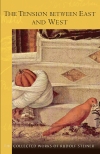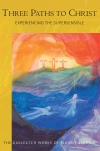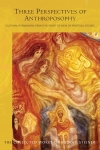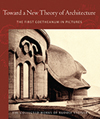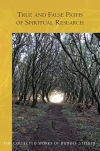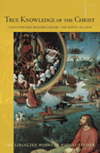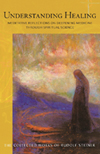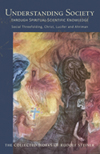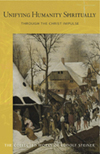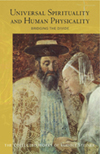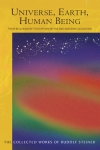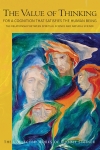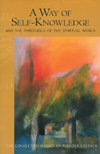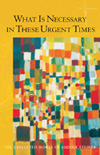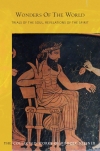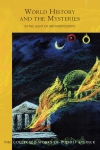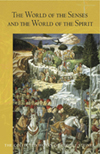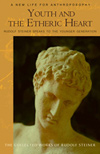
-
‘COLLECTED WORKS’SERIES
AGRICULTURE, SPIRITUAL-SCIENTIFIC FOUNDATIONS
for Agricultural Renewal
One hundred years after Rudolf Steiner presented his lectures on agriculture in 1924, the impact of his words are self-evident. Around the world, biodynamic principles are practised in thousands of thriving farms, vineyards and gardens, and Demeter certification for biodynamic produce is recognized internationally as a mark of quality.
and the Purpose of the Goetheanum
In his final lectures to the general public, Rudolf Steiner speaks with great clarity and purpose about the inner and outer necessity of the anthroposophical impulse in modern times. Following the fire that destroyed the first Goetheanum building in Dornach, Switzerland, Steiner had focused his efforts on rebuilding and reorganizing the Anthroposophical Society. But he also continued to travel and speak to the public – in Prague, Vienna and Basel – to explain the purpose of the Goetheanum and to elucidate the broader aims of his spiritual work. These lectures, including a semi-public series in Dornach, are gathered here and published in English for the first time, together with an introduction, notes and index.
The History and Conditions of the Anthroposophical Movement in Relation to the Anthroposophical Society
An Encouragement for Self-Examination
This course of lectures was given at a pivotal point in the development of the anthroposophic movement. Just months before, an act of arson had caused the destruction of the first Goetheanum, and its darkened ruins appeared to reflect the fragmentations within the Anthroposophical Society. Divisions were appearing amongst members and friends, with individual energies increasingly routed to external initiatives and practical projects. It became apparent that a new impetus was needed.
ANTHROPOSOPHY AND THE NATURAL SCIENCES
Foundations and Methods
This previously untranslated volume in The Collected Works of Rudolf Steiner showcases Rudolf Steiner presenting the key concepts and methods of spiritual science to more or less skeptical academic audiences in the early 1920s, answering such questions as:
What are the tools and instruments required to orient oneself in the world of the soul and the spirit?
How can we know that the spiritual world is an objective world and not merely a psychic projection?
What authorizes the spiritual researcher to acknowledge what he has experienced “on the other side” as a reality that is independent of him?ANTHROPOSOPHY IN THE LIGHT OF GOETHE'S FAUST
Writings and Lectures from Mid-1890s to 1916
Goethe, the great German polymath poet, scientist, dramatist, and novelist, was a major influence throughout Steiner’s life and teaching. While still a student, Steiner wrote introductions to Goethe’ scientific writings (1884–1890), the collection of which became volume 1 in his Collected Works. He also wrote two volumes on Goethe’s epistemology (1886) and philosophy (1894). As he moved closer to the esoteric world, he also gave seminal lectures on Goethe’s fairy tale, “The Green Snake and the Beautiful Lily.” Gradually, he finally approach Goethe’s masterwork, the epic (and deeply esoteric) drama, Faust.
APPROACHING THE MYSTERY OF GOLGOTHA
In February of 1913 - a landmark year for Rudolf Steiner and Anthroposophy - the first General Meeting of the Anthroposophical Society was held. In September, the Foundation Stone for the Goetheanum was laid in Dornach. The ground for Anthroposophy as we know it today was established.
The First Goetheanum, Dornach, 1914
“We need to create an energetic culture of peace—not idle talk of peace, but the real peace that can arise only out of a concrete, mutual understanding of the various individual cultures.”
—Rudolf Steiner (lecture 2)ARCHITECTURE, SCULPTURE, AND PAINTING OF THE FIRST GOETHEANUM
“This spiritual science should not be anything abstract, nothing theoretical, nothing unworldly, nothing unreal.... Thus, it had to create for itself an architectural style, a framework that arises from it as a nutshell from a kernel. Of course, one will be able to raise many objections, and they stand before my soul. But one thing was encouraging in a sense; something went through my soul as I worked on this architectural thought in all its details. When I was a very young man in the 1880s, I heard the Viennese architect [Heinrich] von Ferstel, who built the Votive Church in Vienna, give his commencement address about the development of architectural styles. With a certain emphasis, the great architect Ferstel cried out, ‘Architectural styles are not invented; they arise!’ I have always told myself that we live in an age today when everything spiritual has to be transformed in the human soul so that a new architectural style must arise from this transformation of spirit. The possibility of such a thing always stood before my soul.... One learns through encountering reality when not dealing with abstract ideas, symbols, and allegories, but rather with living art and real life. Spiritual Science needs at least the beginnings of a new architectural style and a new artistic language of forms. It may be imperfect [but] present human civilization demands it!” —Rudolf Steiner
Introduction by Zvi Szir
“The challenge of saying something about art was personal for Rudolf Steiner. He experienced it as deeply connected with his biography. It is not for nothing that, in the last lecture of this volume, he points to his repeated attempts to develop a new approach and new forms of expression for speaking about art. We find at least three forms of this attempted approach in this book.” —Zvi Szir (from the introduction)
as a Reflection of Inner Spiritual Impulses
"I am going to show you a series of reproductions, of slides, from a period in art history to which the human mind will probably always return to contemplate and consider; for, if we consider history as a reflection of inner spiritual impulses, it is precisely in this evolutionary moment that we see certain human circumstances, ones that are among the deepest and most decisive for the outer course of human history, expressed through a relationship to art." —Rudolf Steiner
ARTISTIC SENSITIVITY AS A SPIRITUAL APPROACH TO KNOWING LIFE AND THE WORLD
Today’s orthodox notions of science—which is to say, of knowing—are exceedingly narrow; they posit, implicitly or otherwise, that the only knowledge possible, if any, is that of the physical world. But the skeleton key to unlocking the door, behind which lies the root of the problems and difficulties of our age, and thus their solution, is to be able to fully answer this question: What is it to know something? This question lies at the foundation of spiritual science. Rudolf Steiner had first to solve it for himself, pointing the way for others to do the same (in, for example, his Philosophy of Freedom), long before he could give such lectures as these.
8 lectures, Oslo and Dornach, May 18 – June 9, 1923 (CW 276)
Chapters in the Course of My Life: 1861-1907
Rudolf Steiner seldom spoke of himself in a personal way, but in his Autobiography we are offered a rare glimpse into some of the most intimate aspects of his inner life, his personal relationships, and significant events that helped to shape the philosopher, seer, and teacher he became.
AWAKE! FOR THE SAKE OF THE FUTURE
The implications of the worldview that arises from Anthroposophy—the life’s work of Rudolf Steiner—are both primary and far-reaching. More nuanced than any remotely comparable approach, his work not only suggests the need for a fundamental alteration of our deeply ingrained tendency to accept passively the received wisdom of staid conventionality, it also provides the concrete framework—for anyone with the will to do so—to wake up to reality in an entirely new way. In short, this work and its implications are, therefore, both radical and possibly quite powerful. If this were not true, Anthroposophy would have no real impact and no real enemies. However, this has not been the case.
BACKGROUND TO THE GOSPEL OF ST MARK
‘Christianity was bound at first to be a matter of faith and is only now beginning, very gradually, to be a matter of knowledge.’ – Rudolf Steiner
The Significance of Anthroposophy in Contemporary Spiritual Life
“There is no contradiction, if you look into the matter correctly, between destiny and freedom. However, in order to be able to present the concept of destiny to the world later on, it was first necessary that the concept of freedom be presented in the book The Philosophy of Freedom.” — Rudolf Steiner
BECOMING THE ARCHANGEL MICHAEL'S COMPANIONS
Rudolf Steiner's Challenge to the Younger Generation
'The younger generation is always faced with the dilemma of being heir to the old while about to become a guide for the new.... This cycle of lectures "to the younger generation" speaks of a pathway to a Michaelic harvest for ears that have the goodwill to hear.' - Carlo Pietzner
in Relation to Cosmic Facts
In an absorbing series of lectures, Rudolf Steiner discloses factors in a person’s life on Earth that will influence their experiences in the spiritual world after their death – and conversely, factors in the spiritual world that will affect their next life on Earth. Steiner focuses on the period in the afterlife when the individual has been through kamaloka – the purgatorial place where the soul is purified. Once the soul has been cleansed of its astral sheath, it becomes open to cosmic influences, expanding into the planetary sphere. Now it can begin preparation for reincarnation – for a new human life on Earth. Steiner addresses the vital relationship of the living to the dead – in particular, how those on Earth can influence the souls of the dead. He also speaks on themes of ‘Sleep and death’, ‘The seven-year life cycles of man’, and offers a ‘Christmas gift’ in the form of a lecture on Christian Rosenkreutz and Gautama Buddha. He ends with a mighty picture of the Mystery of Golgotha: Jesus Christ’s death on the cross was only seemingly a death; in reality it enabled the momentous birth of the Earth-Soul.
THE BHAGAVAD GITA AND THE WEST
The Esoteric Significance of the Bhagavad Gita and Its Relation to the Epistles of Paul
This combination of two volumes in Rudolf Steiner's Collected Works presents Steiner's profound engagement with Hindu thought and, above all, Krishna in the Bhagavad Gita. In the first course, 'The Bhagavad Gita and the Epistles of Paul', Steiner's main purpose is to integrate the flower of Hindu spirituality into his view of the evolution of consciousness and the pivotal role played in it by the Mystery of Golgotha - the incarnation, death, and resurrection of Jesus Christ. Steiner views Krishna as a great spiritual teacher and the Bhagavad Gita as a preparation, though still abstract, for the coming of Christ. For him, the Bhagavad Gita represents the 'fully ripened fruit' of Hinduism, whereas Paul is related but represents 'the seed of something entirely new'.
BUILDING STONES FOR AN UNDERSTANDING OF THE MYSTERY OF GOLGOTHA
Human Life in a Cosmic Context
‘If one is unable to conceive of the Christ mystery as a true reality, one also cannot develop any ideas and concepts relating to the rest of world existence that are imbued with reality, which really penetrate to the truth’. – Rudolf Steiner
“Spiritual science does not want to replace Christianity; rather, it aims to be the instrument through which the meaning of Christianity can be grasped. And one thing that will become particularly clear through spiritual science is that the being whom we call Christ must be recognized as the center of life on earth, and that what we call the Christian faith is the ultimate religion, the eternal religion for the future of the earth.” — Rudolf Steiner (July 13, 1914)
CHRIST AND THE SPIRITUAL WORLD
The Quest for the Holy Grail
Reassessing human history in relation to the cosmic-earthly events of Christ’s incarnation, Rudolf Steiner stresses the significance of both Gnostic spirituality and the legends of the Holy Grail. The ‘Christ-Impulse’, he tells us, is not a one-time event but a continuous process, beginning well before Jesus of Nazareth walked the earth. This mighty impulse is a force that gives impetus to human development, such as with the extraordinary blossoming of free thinking of the last two millennia. Surveying this pattern of evolving human thought, Steiner explains the roles of contrasting historical figures, for example the great teacher Zarathustra, Joan of Arc and Johannes Keplar. We are shown the widespread influence of the clairvoyant prophetesses, the sibyls, who formed a backdrop to the Greco-Roman world. Steiner contrasts their revelations to those of the Hebrew prophets.
and the Development of Ego-Consciousness
‘Christ will reappear but in a higher reality than the physical one – in a reality which we will only see if we have first acquired a sense and understanding of spiritual life. Inscribe in your hearts what anthroposophy should be: a preparation for the great epoch of humanity which lies ahead of us.’
CHRISTIANITY AS A MYSTICAL FACT
And the Mysteries of Antiquity
During the fall and winter of 1901 - 1902, Steiner gave a series of lectures called "Christianity As Mystical Fact" to members of the Theosophical Society. The lectures were rewritten and issued as a book later that year. They mark a watershed in the development of Western esotericism. Stiener wrote of the idea behind his book:
The Course for Speakers to Promote the Idea of Threefolding
From time to time, reading Rudolf Steiner’s Collected Works, one encounters a previously unknown set of lectures that seems to promise no more than a rather specialized content, of interest primarily to those concerned with its apparent theme—here a preparatory course for those about to embark on a speaking tour to promote the “threefolding” of society. Then one discovers various subthemes that unexpectedly spark new insights, not only into Anthroposophy, but also into Steiner himself, who suddenly appears in a new light. In such cases, we may encounter a passage or lecture that illuminates, challenges, and ultimately transforms what we think we know, and our perspective changes. Our habitual understanding falls away, and we grasp that what we are reading is not information or description; it is a call to act in a new way. Thereby, we are no longer simply readers, but also participants in the adventure of Anthroposophy.
CONCERNING THE ASTRAL WORLD AND DEVACHAN
“My first lectures within the groups that arose from the theosophical movement had to be adjusted to the soul disposition of those people. They had assimilated theosophic literature and were accustomed to certain modes of expression. Initially, in order to be understood, I had to remain with those modes. Nor was it possible for me to use my own terms until, over the course of time, the work had progressed. As a result, the lecture material as it was made available through notes taken during the first years of the anthroposophic work gives a true, inner picture spiritually. It portrays the path I adopted to gradually make spiritual knowledge known, so that what was closer could lead to an understanding of what was more remote. But this approach must really be seen in light of its inner quality.” —Rudolf Steiner,Autobiography: Chapters in the Course of My Life, 1861–1907(pp. 66–67)
THE CONNECTION BETWEEN THE LIVING AND THE DEAD
“What may be seen in the thoughts and memories left behind in the souls of those who love the dead is certainly added to the world that the dead need directly, but it also elevates, improves the existence of the dead. We could compare this to art in the physical world, but there is no comparison, because it is uplifting for the dead, an improvement, in a sense far superior to the way in which art improves the physical world for us. Thus, it has a deep meaning when we unite our thoughts with those of the dead.” (from the first lecture)
Anthroposophy and the Social Question
Delivered in the context of post-war cultural and social chaos, these lectures form part of Rudolf Steiner’s energetic efforts to cultivate social understanding and renew culture through his innovative ideas based on ‘threefolding’. Steiner develops a subtle and discerning perception of how social dynamics could change and heal if they were founded on real insight into our threefold nature as individuals, social beings and economic participants in the world. He doesn’t offer a programmatic agenda for change, but a real foundation from which change can organically grow.
Thoughts for the New Year 1920
“Today, the ‘I’ is empty of atavistic, clairvoyant visions, and when we look back at the ‘I’, it is, so to speak, more or less only a point in our soul life. The content of this ‘I’ is a firm point of support for everyone, but still only a point. But we are living in a time when the point should once again become a circle in which the ‘I’ should once again received content.... Just as the ‘I’ was filled for the human being of the past with atavistic, clairvoyant content, so in our time our ‘I’ should fill itself with a new spiritual content, received in full consciousness, which once again provides the tie that binds our soul to the soul being of the divine. Now, a start must be made.” - Rudolf Steiner
DEATH AS METAMORPHOSIS OF LIFE
The Collected Works of Rudolf Steiner
This jewel of a book - consisting of seven lectures given in various cities, mostly in 1918 - movingly and with great spiritual maturity and rare emotional intensity expresses Rudolf Steiner's wisdom, insight, and compassion.
DEEPER SECRETS OF HUMAN EVOLUTION IN LIGHT OF THE GOSPELS
‘The personality who received the Christ Being into himself in his thirtieth year is a complex entelechy. Only on the basis of the Akashic Record can an accurate view be gained as to why the life of Jesus is so diversely presented in the various Gospels...’ – Rudolf Steiner
THE DESTINIES OF INDIVIDUALS AND NATIONS
Amid the darkness of World War I, Rudolf Steiner offered a profoundly spiritual response to the tragedy of global conflict. With compassion and clarity, each of these lectures begins with a reverent verse honouring the fallen, before unfolding a deeper perspective on the unseen forces shaping human destiny.
Spiritual-Scientific Enquiries into the Nature of the Human Being
Today, illness is almost universally regarded as either a nuisance or a grave misfortune. In contrast to this conventional thinking, Rudolf Steiner places the suffering caused by disease in a broad vista that includes an understanding of karma and personal metamorphosis. Illness comes to expression in the physical body, but mostly does not originate in it, says Steiner, and thus a key part of the physician’s work involves gaining insight into the whole nature of an individual – his essential core being. From this perspective, illness offers us the opportunity for deeper healing.
THE DRIVING FORCE OF SPIRITUAL POWERS IN WORLD HISTORY
7 lectures in Dornach, Switzerland, March 11–23, 1923
“Historical happenings on Earth can be understood in their reality only when we see them as reflections of what is being enacted in the supersensible, spiritual world between the beings of the higher hierarchies.” — Rudolf Steiner (March 17, 1923)
The Living Gifts of Anthroposophy – The Need for New Forms of Consciousness
These authoritative lectures, delivered during a period of deep crisis and conflict in world history, present a comprehensive spiritual teaching for contemporary humanity. Despite the raging world war, Rudolf Steiner was still actively touring Central Europe whilst simultaneously completing work on his architectural masterpiece, the first Goetheanum, in neutral Switzerland.
Notebook entries, addresses, rehearsals, programs, introductions to performances, and a chronology, 1913–1924; Talks given before 16 eurythmy performances in Bottmingen, Dusseldorf, Munich, Berlin, Dornach, Stuttgart, Ilkley, and Penmaenmawr
Nine lectures held in Berlin on October 23, 1911, and between March 19 and June 20, 1912 (CW 133)
The Curative Education Course
‘Essentially we do not really have the right to talk about normality or abnormality in a child’s inner life, nor indeed in the inner life of human beings altogether... One does not gain much from such labelling, and the first thing to happen should be that the physician or the teacher rejects such an assessment, and goes further than saying that something is clever or sensible according to the way people are habitually thinking.’ – Rudolf Steiner
ESOTERIC LESSONS 1904 - 1909 VOL 1
Only recently has it become clear that on most occasions Rudolf Steiner would visit a city to give a lecture, either to members or to the general public, and also hold a meeting of the Esoteric Section where he also gave a talk. These talks were intended to provide his most advanced students with the esoteric background of his ongoing spiritual research.
From the Esoteric School, vol. 2
Notes Written from Memory by the Participants and Meditation Verses by Rudolf Steiner
"Many who enter esoteric training are very disappointed and say that they had imagined the exercises to be much more energetic and the effects of the exercises to be far more drastic. Those who tell this to themselves should quickly consider the possibility that they are caught in a great error, and that they should make the greatest efforts to correct this error as soon as possible. It is not the exercises that lack enough energy, but rather the individual. It is not the exercises that are ineffective, but rather the person who is not making them effective. By living an esoteric life, the student should become an entirely different person. One must add something new to the old." - Rudolf Steiner
From the Esoteric School
Volume 3
Beginning in January 1913, five days after the Anthroposophical Society was founded, this rich volume traces the esoteric work (and lack thereof) in the decade leading up to the reestablishment of the General Anthroposophical Society at the "Christmas Conference" (1923/1924) and the subsequent creation of the First Class, which replaced the Esoteric Section.
ETERNAL AND TRANSIENT ELEMENTS IN HUMAN LIFE
The Cosmic Past of Humanity and the Mystery of Evil
In what has been referred to as ‘the most advanced course in anthroposophy’, Rudolf Steiner addresses one of the great questions of our time: the role of evil in human development. He speaks of the year 666, when three time streams intersected – the familiar linear stream and two ‘lateral’ streams – and the reoccurrence of the 666-year rhythm in history. At the heart of this mystery is the being Sorat (‘the beast’), who attempted to flood humanity with premature spiritual knowledge by inspiring the scholars of the ancient Academy of Gondishapur. Although responsible for the saving of Aristotle’s works, Steiner describes how the Academy generated tremendous but dangerous gnostic wisdom, which eventually spread through the Christian monasteries and inspired Western scientific thought. Its immediate negative impact, however, had to be counteracted by the Prophet Muhammad and the founding of Islam.
in Cosmic and Human History
In a broad-ranging series of lectures, Rudolf Steiner shines new light on the spiritual background to the outbreak of the Great War in Europe. Spiritual entities stand behind the various peoples of the world, he says. He describes how these beings – Folk Souls – relate to the cultural diversity of Europe, America and the East, and speaks of their individual tasks and destinies in relation to the deeper causes of the catastrophic war. Central Europe has the particular mission of mediating between the Western world, the Slavic countries and by extension the East. Steiner alleges that Western secret societies consciously suppressed the spiritual life of this central cultural region through malign activities. These same brotherhoods exploited H. P. Blavatsky’s occult faculties for their own ends.
EURYTHMY AS SPEECH MADE VISIBLE
Speech Eurythmy Course
With these fundamental lectures on speech eurythmy – given just months after his course entitled ‘Eurythmy as Visible Singing’ – Rudolf Steiner completed the foundations of the new art of movement. In connecting to the centuries-old esoteric and exoteric Western traditions of ‘the Word’ – the creative power in the sounds of the divine-human alphabet – he gave it concrete form and expression in the performing arts, education and therapy. Although aimed primarily at the professional concerns of eurythmists who perform, teach or work as therapists, the lectures offer a wealth of suggestions and insights to anyone interested in the arts.
EURYTHMY FORMS FOR THE CALENDAR OF THE SOUL
These eurythmy forms and indications (CW A 23/2), published here for the first time in English, were given by Rudolf Steiner for the weekly verses of The Calendar of the Soul. The wealth of forms and metamorphoses in the cycle of the year is study material for all students of eurythmy. The forms can also be stimulating for those who are not practicing eurythmists but are interested in deepening their relationship with the calendar’s verses and the cycle of the year.
THE FALL OF THE SPIRITS OF DARKNESS
The Spiritual Background to the Outer World: Spiritual Beings and their Effects, Vol. 1
Speaking towards the end of the catastrophic Great War, Rudolf Steiner reveals the spiritual roots of the crises of our times. Since 1879, he says, human minds have been influenced by backward angels, ‘spirits of darkness’, who – following their defeat in battle with Archangel Michael – were forced out of the heavens and ‘fell’ to the earth. This war in the spiritual worlds had consequences, and it is essential that people today are sufficiently awake to the retrogressive influences around them. In a positive sense, we can choose freely to engage with the spirits of light, who seek to emancipate human beings from bonds of race, nation and blood.
FIRST STEPS IN CHRISTIAN RELIGIOUS RENEWAL
Preparing the Ground for The Christian Community
The lectures and discussions presented here make up the first of the so-called five Priest Courses. They record the first steps of the remarkable journey taken in 1921 by a small group of dedicated souls who, out of their own inner needs and guided by Rudolf Steiner, sought a path to Christian religious renewal.
FOUNDING A SCIENCE OF THE SPIRIT
‘Everyone can derive joy and hope from the communications of another, for what we are told about the higher worlds is not mere theory, unrelated to life. As its fruits, it brings us two things we must have if we are to lay hold of life in the right way – strength and security – and both are given in the highest measure.’ – Rudolf Steiner
The Doorway of Initiation – The Trial of the Soul – The Guardian of the Threshold – The Souls Awaken
The Doorway of Initiation – The Trial of the Soul – The Guardian of the Threshold – The Souls Awaken
FREEDOM OF THOUGHT AND SOCIETAL FORCES
Implementing the Demands of Modern Society
Freedom of Thought and Societal Forces provides a broad overview of Steiner’s fresh thinking on "social threefolding". He acknowledged that the demand for social change, derived above all from the working class, whom industrialization had forced into a kind of indentured life dominated by economics. From Steiner's perspective, the underlying issue was not only economic, however, but also spiritual or cultural. Culture and the cultured classes had become estranged from "real life". Society needed a "free" culture that would include all classes. It also needed to shift labour into the legal sphere of rights, the only place where workers could find real freedom in society. Capital, too, needed to be liberated from egotism and allowed, like goods, simply to circulate. Above all, Steiner understood that social realities could not be separated from the spiritual realities of human existence.
“FREEMASONARY” AND RITUAL WORK
The Misraim Service: Texts and Documents from the Cognitive-Ritual Section of the Esoteric School 1904-1919
Alongside the Esoteric Section, Rudolf Steiner created the “Cognitive Ritual Section,” an order connected to Masonic tradition, but independent and Inspired by Anthroposophy. This astonishing volume contains the rituals, lectures, meditations, and other instructions Steiner gave to students and members of the esoteric school.
Knowledge of the cosmic significance of Christ and his mission, once experienced intuitively, has faded over the centuries. As theologians and historians of the Church critically scrutinized the Gospel records, their focus shifted from a gnostic vision of Christ to the human figure of ‘the simple man’, Jesus of Nazareth.
FROM THE HISTORY AND CONTENTS OF THE FIRST SECTION OF THE ESOTERIC SCHOOL 1904-1914
Letters, Documents and Lectures
This volume is an important text for anyone interested in the development of Rudolf Steiner's teaching and for those wishing to explore the advice and admonitions Steiner provided for his early esoteric students. This collection of letters, circulars, and lectures offers a glimpse of the birth of the anthroposophic movement from the German section of the Theosophical Society of the late nineteenth century. One gains a clear picture as to why Steiner could no longer work within the theosophic framework, as well as the events that led to the split between the Theosophical Society under the leadership of Annie Besant and the Esoteric School under Steiner's guidance and leadership.
GOETHE'S FAUST IN THE LIGHT OF ANTHROPOSOPHY
Spiritual-Scientific Commentaries on Goethe’s Faust, Vol. 2
This volume is the sequel to Anthroposophy in the Light of Goethe’s Faust
By late 1916, Rudolf Steiner had become an important interpreter of Goethe and frequently discussed Faust—probably Goethe’s greatest work—from the perspective of anthroposophic Spiritual Science. Although Steiner’s readings are unconventional and unsystematic, his insights into the text are penetrating and prescient, opening scholarly avenues not discovered or pursued by others until decades later and, in some cases, still await fuller elaboration.
An Outline of the Epistemology of His Worldview
As the editor of Goethe's scientific writings during the 1880s, Rudolf Steiner became immersed in a worldview that paralleled and amplified his own views in relation to epistemology, the interface between science and philosophy, the theory of how we know the world and ourselves. At the time, like much of the thinking today and the foundation of modern natural science, the predominant theories held that individual knowledge is limited to thinking that reflects objective, sensory perception. Steiner's view was eventually distilled in his Anthroposophical Leading Thoughts in 1924.
An Impulse of Transformation and Resurrection
‘There will be a resurrection – a resurrection that should not be imagined politically… but it will be a resurrection. Goetheanism still rests in the grave as far as external culture is concerned. But Goetheanism must rise again.’
and their Influence on Humanity
‘We learn gradually to raise our eyes not only to material existence; instead we discover spiritual entities and their actions wherever we look in the universe... We get to know the deeds of these spirits. We are alive and active and we are within the spiritual entities and their activities.’ – Rudolf Steiner
THE GOSPEL OF JOHN AND THE OTHER THREE GOSPELS
‘What is the Christ-event? It is a confluence of all preceding philosophies and religious streams of humanity… united in Palestine; and they were expressed in the Gospels according to the different types of initiation of the one or other Evangelist.’ – Rudolf Steiner
“It was Steiner’s intention in these lectures to establish the ways in which this Gospel and its author, Lazarus-John, the one Christ called the beloved disciple, provided one of the surest paths to an understanding of the profound relationship of Christ to each human person and to Earth.... He leads his audience, and us readers, to an understanding of Lazarus-John unknown even to the other three primary evangelists—Matthew, Mark, and Luke—who wrote their Gospels several decades before Lazarus-John.” — Robert McDermott (from the introduction)
Spirit, Nature and Our Bodies
In all his lectures to doctors and in his explanations of anthroposophic medicine, Steiner emphasized that his medical concepts are not intended to replace conventional Western medicine, but to extend it; diagnosis and healing methods are expanded to include our soul and spirit.
Speaking just months after the end of the First World War, Rudolf Steiner urges his audience to awaken to the practical relevance of spiritual knowledge. Serious engagement with contemporary spiritual-scientific concepts can awaken healthy forces of the will, which in turn facilitate constructive action in the outer world. Conversely, ideas that are remnants of a previous age – echoed in empty phrases and dogmas – only hinder our ability to think with the consciousness demanded by the times, destroying the potential for true social initiative.
Human Responsibility for World Evolution through Our Spiritual Connection with the Earth and the World of the Stars
“These two things—knowledge of the human being and feeling for the entire cosmos—these are what give the human being equilibrium. But this he can find if, in the most modern sense, he can really grasp the Christ mystery, grasp it as anthroposophical spiritual knowledge can give it to him. For there we speak of Christ as a cosmic being that has descended to the earth from cosmic infinitude. We learn to feel cosmically, and need only imbue this cosmic feeling with content. This we can do only through anthroposophical spiritual science, otherwise the concept of Christ remains empty for us. The concept of Christ turns into mere phrase if we do not grasp the cosmos itself as human.”—Rudolf Steiner, Dornach, January 30, 1921
HOW THE SPIRITUAL WORLD PROJECTS INTO PHYSICAL EXISTENCE
The Influence of the Dead
‘By cultivating spiritual thoughts here on earth we can provide nourishment for the dead... When fields lie fallow they produce no crops to feed humanity and people may die of starvation. The dead cannot die of starvation, of course; all they can do is suffer when spiritual life lies fallow on earth.’ – Rudolf Steiner
What convinces us of the truth of a point of view? Why do we find it difficult to understand or accept differing perspectives? What are the inner foundations of our knowledge?
THE HUMAN BEING AS BODY AND SOUL IN RELATION TO THE COSMOS
Human Evolution and the Soul and Spirit of the Universe, Part I
‘That is the ideal towards which Ahriman is striving: to destroy the individuality of human beings in order, with the power of human thinking, to transform the earth into a web of gigantic thought spiders – but real spiders. That is the ahrimanic goal from which we must escape by really imbuing ourselves with the spirit Word: “Not I, but the Christ in me”.’ – Rudolf Steiner
THE HUMAN BEING AS SPIRITUAL BEING EVOLVING THROUGH THE COURSE OF HISTORY
Human Evolution and the Soul and Spirit of the Universe. Part II
‘If we lived only in worlds of spirit, as we do between death and a new birth, we would never be able to acquire freedom there. It is something we can only achieve by our efforts within the physical world...’ – Rudolf Steiner
A Spiritual-Scientific Quest
‘Anyone who takes hold of what we call spiritual science, not with purely abstract thoughts but with his whole being, will see that this spiritual science goes right into the dexterity of the hands, that it makes a person more capable and enables him to extend his interest over wider areas and his will over a wider world.’ – Rudolf Steiner
HUMAN QUESTIONS AND COSMIC ANSWERS
‘In the case of a solar eclipse, the evil that has spread over the earth can be carried out into the cosmos to wreak more havoc there, whereas in the case of a lunar eclipse, people who absolutely want to be possessed by evil thoughts can receive them from the cosmos.’
Past and Present – Occult Fraternities and the Mystery of Golgotha
‘To live in truth, to wish to be true in one’s whole being, will be the watchword of the future.’ – Rudolf Steiner
Spiritual-Scientific Aspects of Healing
‘An external view of states of health and sickness must be augmented by what we can also know about the inner, spiritual reality within the human being.’ – Rudolf Steiner
INFLUENCE OF THE DEAD ON DESTINY
In these extraordinary lectures, Steiner explicates the manifold ways in which the so-called dead participate continuously in the lives of those on Earth. He begins by using concrete examples to establish the fact that the boundary between the physical and spiritual worlds is “right in the middle of the Human being”. It is in the gap between the “sensory”, or motor, nerves. According to Rudolf Steiner, there are not two kinds of nerves but only one, divided by a gap, or interruption, that is in fact the boundary between physical and spiritual realities.
and the Development of the Human Mind
In an astonishing series of lectures on the science of spiritual knowledge, Rudolf Steiner begins by addressing an audience in Dornach, Switzerland – where, only months earlier, his architectural masterpiece, the first Goetheanum, had been destroyed by fire. He discusses the nature of our planetary system, revealing the planets that are characterised by freedom and those that determine destiny. The spirits of the moon live in seclusion, preserving ‘original wisdom’ and reflecting powers connected to sexuality, whereas the sun creates harmony. Jupiter is ‘the thinker’, whilst the spirits on Saturn act as ‘living memory’. Speaking in London, Steiner states that the things that happen to people in sleep are more important than anything that occurs during waking hours! Human beings, he says, must learn to see themselves as an image of spirits and spiritual activities on earth.
INNER EXPERIENCES OF EVOLUTION
In this most remarkable and in many ways unique course of lectures, Rudolf Steiner describes the inner experience of the states of consciousness known as the Saturn, Sun, Moon and Earth stages of evolution.
and the Experience of Tone
Introduction by Dorothea Mier
“A tone is at the foundation of everything in the physical world.”
INNER READING AND INNER HEARING
Achieving Being in the World of Ideas
These two lecture courses, given just after the beginning of World War I, stand as a kind of unexpected gift. A few months later, once the war became a reality, the possibilities for esoteric work would change and it would become more difficult to do spiritual research. But in the short interval before the true horror of the conflict unfolded, Rudolf Steiner - almost by the way - was able to give these lectures, which lay out in the clearest fashion the path of anthroposophic meditation, and its assumptions, language, and consequences.
Third Scientific Course
“So you see, the most important thing to me has been to call forth within you an experience of the harmony between the human constitution and the structure of the cosmos. If you’ve really been following thus far, you can’t possibly regard this harmony as a sin against the spirit of science.” (from lecture 16)
INTRODUCING ANTHROPOSOPHICAL MEDICINE
Taking account of modern medical knowledge and practice, and deeply versed in alchemical, Paracelsian, and naturopathic approaches, as well as homeopathy, aroma therapy, and other 'alternative' therapies, Steiner demonstrates, on the basis of his own researches, how a truly integrated whole-person medicine is possible - one that understands the human as a being of body, soul, and spirit; a microcosm in the macrocosm, a mirror of the earth and of the heavens.
“When faced with the way events are depicted in history, we should sense how necessary it is to rethink them. We should sense that today’s difficult time, which has brought such misery upon humanity, is the karmic effect of distorted, superficial thinking. We should sense that the painful experiences we are going through are in many respects the karma of materialism.” —Rudolf Steiner
Cosmic Influences and the Spiritual Task of Northern Europe
“Times have become serious; they have become so serious today that we must of necessity look upward from the narrowly defined events occurring within the limited horizon—which the majority of humanity prefers to recognize as the only legitimate one—to the cosmic expanses, also to the cosmic expanses of human soul-spiritual experiences. This is where we witness the cosmic turning point in time. If we become aware of this cosmic turning point in time, then we become aware that a cosmic New Year of the spirit must begin for humanity.”—Rudolf Steiner, New Year’s Eve lecture, 1921/22
and its Relation to World Evolution
How are we connected to the world around us? This question, says Rudolf Steiner, is one that lives subliminally, drawing us into the depths of the psyche. There, our candle of consciousness tends to flicker and go out. But spiritual schooling can relight it, so that we learn to perceive realms of our being beyond the restricted self.
The Greater and the Lesser World
Questions Concerning the Soul, Life and the Spirit
Rudolf Steiner shows how deeply and intimately human beings, the microcosm, are related to the macrocosm. But for Steiner the macrocosm is more than just the physical universe. It includes many hidden realms – like the world of Elements and the world of Archetypes – which lie behind outer manifestations such as our physical body. The macrocosm works within us continuously – in the daily alternation between sleeping and waking and in the great cyclical interchange between incarnation on earth and our time between death and rebirth. Steiner discusses the various paths of self-development that lead across the threshold to spiritual dimensions, transforming human soul-forces into organs of higher perception. In future we will even have the capacity to evolve a form of thinking that is higher than the intellect – the thinking of the heart.
Meditations 1903 - 1925
Soul exercises, 1903-1925
Transform yourself for the sake of the world.
Learn to practice thinking, feeling, sensing, and willing without egoism.
Let your work be the shadow that your I casts
when it is shone upon by the flame of your higher self.Revealing the Essential Secrets of Human Nature
‘...This will generate a struggle covering the face of the whole earth. The one and only remedy for this nonsense being made of human evolution will be the path that can lead humanity to the spirit – the path of Michael, which finds its continuation in the path of Christ.’ – Rudolf Steiner
“It is particularly important . . . especially at the present time, to speak about the mission of the individual folk souls . . . because the destiny of humanity in the near future will bring people together in far greater measure than has hitherto been the case in order to fulfil a mission common to the whole of humanity. But the members of the individual peoples will only be able to offer their proper, free, and positive contributions if they have, above all else, an understanding of their own native origin, an understanding of what we might call the self-knowledge of their people, their folk.” —Rudolf Steiner
THE MISSION OF THE NEW SPIRIT REVELATION
The Pivotal Nature of the Christ Event in Earth Evolution
‘What would we be without love? We would inevitably become isolated and gradually lose all connection with our fellow human beings and our fellow creatures in the natural world.’ – Rudolf Steiner
From Isis to the Holy Grail
In a concise study, Rudolf Steiner presents an inspirational sketch of the evolution of the Mysteries – from ancient Persia through Egypt and Greece, to the Christian era and the present day. He traces the line of initiates from Egyptian divinities Isis and Osiris to Moses, King Arthur’s Round Table and the Holy Grail in the twelfth century. Steiner focuses on the process of initiation as a historical topic: how initiation worked in ancient Egypt and in the late Middle Ages. But his presentation is also inspirational, leading to the question: How can we advance to initiation now? He underscores the potential for achieving enlightenment today without a teacher in the flesh, and explains the four stages of the process towards initiation. He also highlights the need for strenuous efforts to overcome the subtle power of evil – in the form of Lucifer and Ahriman – through selfless work.
The Nature and Significance of Central Europe and the European Folk-Spirits
Speaking during the early stages of the First World War – with the Western Front just miles away and thousands of young men dying – Rudolf Steiner focuses on the subject of death. In particular, he addresses the difficult question of why some people die prematurely, particularly in youth. Steiner also speaks of the deaths of three of his acquaintances, having made contact with their living souls in the afterlife. He voices their own words and describes the first stages of their journeys after death.
Their Activity in our Visible World
‘Suppose you have seen an event, have formed an idea about it, and you say something that is not true – in other words, something that is a lie. Then what flows from the object is correct and what flows from you is false and this collision is a terrible explosion; and each time you do this, you attach a gruesome being to your karma which you cannot get rid of again until you have made good what you lied about.’ – Rudolf Steiner
Translated by Pauline Wehrle
Abounding in lively anecdotes and fresh insights, these lectures draw the reader into a rich contemplation on the nature of necessity and freedom in the world and in human life. A master of the art of the lecture, Rudolf Steiner brings together apparently disparate elements, resolving contradictions into a higher unity, showing us that far from being mutually exclusive, necessity and freedom are intimately interwoven in the intricate tapestry of life.
THE OCCULT TRUTHS OF MYTHS AND LEGENDS
Greek and Germanic Mythology
Richard Wagner in the Light of Spiritual Science
In this series of previously-untranslated lectures, Rudolf Steiner describes how myths and legends portray humanity’s most ancient evolutionary and spiritual history. Folklore presents ancient mystical wisdom in the form of stories – clothed in pictures by initiates – that enable individuals to understand their content in a more intellectual form at a later time.
OLD AND NEW METHODS OF INITIATION
Drama and Poetry in the Change of Consciousness in Modern Times
What are the key differences between the contemporary spiritual path and that of the ancient mysteries?
ON PHILOSOPHY, HISTORY, AND LITERATURE
Lectures at the Worker Education School and the Independent College, Berlin, 1901–1905
Steiner’s approach was at first a surprise for the students, who had been schooled in Marxist thought and tended to view all spiritual matters as ‘byproducts’ of material, economic processes. For them, it was questionable whether the spiritual striving of individual human beings could really be a driving force in history. Steiner knew the soul disposition of his students and the ‘inexpressibly tragic situation’ that the proletariat’s intense desire for knowledge had so far been ‘satisfied only through the grossest form of materialism.’ But the materialistic ideas that had been absorbed by the workers from popular scientific literature and from Marxist writings contained ‘partial truths.’ (introduction)
OUR CONNECTION WITH THE ELEMENTAL WORLD
Kalevala – Olaf Åsteson – The Russian People
The World as the Result of Balancing Influences
The heart of this volume comprises Rudolf Steiner’s commentary on the elemental forces that are responsible for our earthly nature as human beings – forces that influence us through our membership of a national or geographical group. When such elemental forces are not recognised and understood, he states, they cause conflict and chaos. However, Steiner indicates an important accompanying task that calls upon each human being to develop individuality, emancipating ourselves from the earthly influences underlying national and racial groups.
Memorial, Funeral, and Cremation Addresses
This book collects Rudolf Steiner's memorial, funeral, and cremation addresses, as well as a sampling of prayers and meditations for the dead. The context, intimate and sober with grief, means that his intent is quite other than if he had been speaking in a lecture hall. His primary concerns "while based on spiritual-scientific research and, in some cases, the actual living expression of it in real time" are ethical and existential and, at the same time, ceremonial and communal. He stands as speaker before and for the living "relations, friends, and community members" and for the one who has died, even, in a way, for the greater "cloud" of all the dead. With his feet planted firmly on the Earth, Steiner moves seamlessly between the sensory-physical, embodied world and the invisible, suprasensory, discarnate one. Speaking in an intimate, personal manner to both worlds, he unites the living and the dead with words that are both practical and healing.
in Societal Events
Barely four months after the end of the First World War, with Europe in chaos and exhausted from years of conflict, Rudolf Steiner offered these lectures of hope and renewal. Despite continuing social troubles around the world, he knew that human beings had an opportunity to organize society in a new way. Steiner responded to this prospect by giving suggestions for creating innovative social structures that are in harmony with people’s inner needs.
PATHS AND GOALS OF THE SPIRITUAL HUMAN BEING
Life Questions in the Light of Spiritual Science
Speaking to audiences in Denmark, Germany and France, Rudolf Steiner discusses a wide range of topics: from positive and negative human soul capacities, true self-knowledge and karma, to changes in human consciousness, from ancient times to the modern era – all in the context of the incarnation of Christ on earth.
Treatment, Therapy and Hygiene – Spiritual Science and Medicine
‘The intention is to take a practical subject and show how our spiritual science with anthroposophical orientation truly can play an effective role in everyday life.’ – Rudolf Steiner
POLARITIES IN THE EVOLUTION OF HUMANITY
West and East – Materialism and Mysticism – Knowledge and Belief
‘The present age needs to understand that human beings must hold the balance between the two extremes, between the ahrimanic and the luciferic poles. People always tend to go in one direction... The Christ stands in the middle, holding the balance.’ – Rudolf Steiner
An Esoteric View, From Luciferic Past to Ahrimanic Future
‘Whatever turbulent outward events occur in the world, whatever form is taken by things seeking to work their way out of the depths of human evolution, we only really hearken to the true, underlying nature of these events ... if we observe the world from a spiritual perspective.’ – Rudolf Steiner
Science · Philosophy · Theology · Education · Social Science · Theory of Language
“Each day Dr. Steiner opened the session dedicated to a particular branch of science with an introductory lecture.... These were amazing sketches—with an illuminating clarity and a sure brush stroke. Dr. Steiner painted a picture of each scientific field exactly as it was supposed to be in the future, seen from the anthroposophic perspective. With regard to the future tasks...these introductory lectures were like scientific sketches of an artist, in which the whole painting could be revealed to the viewer.” (a member of the audience)
In a previously-unavailable series of talks to the general public, Rudolf Steiner builds systematically, lecture by lecture, on the fundamentals of spiritual science – from the nature of spiritual knowledge and its relationship to conventional science, the path of personal development and the task of metaphysical research, to specific questions on the mystery of death, the meaning of fairy-tales, the significance of morality and the roles of individual figures in human evolution, such as Leonardo da Vinci, Raphael and Jacob Boehme.
Lectures and Seminars on World Economics
Rudolf Steiner gave this complex sequence of dense, subtle, multileveled lectures and seminars to students of economics in Dornach, Switzerland, during the summer of 1922. The course reflects a lifetime of thinking on the subject and marks the conclusion of his intense five-year period of activism in the service of social, political, and economic issues.
The Spiritual Background to Human History
In these foundational lectures, Rudolf Steiner presents a bold and spiritually alive understanding of human evolution and our deep connection to the cosmos. Far more than a philosophical inquiry, this work is a challenge to the assumptions of materialism and an appeal to reawaken to our spiritual tasks.
These inspirational lectures offer a compelling introduction to a modern path of spiritual development rooted in esoteric Christianity. Rather than drawing solely from historical traditions, Steiner presents a renewed spiritual science – anthroposophy – based on firsthand research.
ROSICRUCIANISM AND MODERN INITIATION
Mystery Centres of the Middle Ages
The Easter Festival and the History of the Mysteries
‘Steiner has been able to clarify the historical reality behind the Rosicrucian story, with all its aura of glamour and fantasy. That effected, he points to the enormity of its vision for the future evolution of ideas…’ – Dr Andrew Welburn (from the Introduction)
The Unity of Art, Science & Religion. The Theosophical Congress of Whitsun 1907
The Congress of the Federation of the European Sections of the Theosophical Society was held in Munich at Whitsun 1907 and marked the emergence of Anthroposophy from Theosophy. Rudolf Steiner surprised some participants and dismayed others when he introduced the Rosicrucian path - a path of thinking and the unification of art, science, and religion into the greater theosophical tradition.
THE SEASONAL FESTIVALS AS SOUL EXPERIENCE
The Human Being in Relation to Individual Spiritual Beings
“The true value of the Anthroposophical Society can only be assessed by verifying whether it understands not only dead anthroposophy, which concerns itself with what is past, but whether it also understands living anthroposophy. Living anthroposophy can also be a sum of flaming sparks! But these sparks of fire will be inside a temple that is not made of external material. Physical flames consume temples that consist of outer materials. The flames of genuine spiritual enthusiasm, of true spiritual life—which must permeate the temple because they must illuminate it with what lights up in the spirit—these flames cannot destroy the temple; they can only give an ever more glorious form to this temple. Let us think of what living anthroposophy is; let us think of it as the fiery flame that will lead us ever further, like the living spirit of anthroposophy itself—which shall lead us to the further evolution of humanity and to the rebuilding of what is now in such an evident decline.”—Rudolf Steiner, Berlin, May 23, 1923
SEXUALITY, INNER DEVELOPMENT, AND COMMUNITY LIFE
Ethical and Spiritual Dimensions of the Crisis in the Anthroposophical Society in Dornach, 1915
7 lectures, Dornach, September 10–16, 1915
“These lectures and documents from the summer and fall of 1915 were a response to a crisis in the Anthroposophical Society, a crisis Rudolf Steiner wanted the membership to be aware of. In part, the crisis was provoked by Alice Sprengel, a long-time student of Rudolf Steiner, and her reaction to the marriage of her spiritual teacher to Marie von Sivers. Her expectations, the exact nature of which is not quite clear, were connected to the important role she felt herself playing in the anthroposophical movement. Faced with the close working relationship and then the marriage of Rudolf Steiner and Marie von Sivers in the winter of 1914, Alice Sprengel not only sent personal letters to both but also brought her disappointment and sense of abandonment to the attention of other members of the Anthroposophical Society.”
“She also had a close relationship to Heinrich and Gertrud Goesch, a couple whose interest in Rudolf Steiner’s work was matched by an equally strong fascination with the then-emerging psychoanalytical school of Sigmund Freud. Influenced by Alice Sprengel and his own inner uncertainties, Heinrich Goesch accused Rudolf Steiner, both privately and publicly, of manipulating the membership of the Anthroposophical Society into a dependent status.” —Christopher Schaefer, PhD (from the introduction)‘What underlies the entire thrust and direction of these lectures is that we are not dealing with some arbitrary programme or scheme; we are not dealing with the intentions or opinions of this or that social class. Rather, it is a matter of tapping into what prompts the deepest, most realistic impetus for the coming decades in human evolution…’
Word and Symbol Meditations
"The whole world stands facing the human soul—dark, unknown as the blue of the sky. But what is unknown comes. The human soul must feel this coming as its own extinguishing. Sensing this self-extinguishing is followed by the right to re-create oneself anew from the outer world that has been absorbed.... "I am 'I.'"
SPIRIT AS SCULPTOR OF THE HUMAN ORGANISM
‘Let us be courageous and not draw back in fear when realities of the world of spirit that play into human life are unveiled. You see, the future of humanity depends on us learning to live with the world of spirit in the same way that we live with the physical world here on earth.’ – Rudolf Steiner
THE SPIRITUAL BACKGROUND TO THE FIRST WORLD WAR
With the unprecedented global conflict of the First World War as an overarching theme, Rudolf Steiner addresses timeless issues such as the search for harmony between peoples and nations, the development of the human capacity for love, the contemporary presence of Christ, and the questions of reincarnation and life after death.
SPIRITUAL BEINGS IN THE HEAVENLY BODIES AND IN THE KINGDOM OF NATURE
In the architecture of Rudolf Steiner's great cosmological temple, this extraordinary course of lectures on spiritual beings forms the central pillar with other important texts such as the fourth chapter of An Outline of Esoteric Science (CW 13); The Spiritual Hierarchies and the Physical World (CW 136); and Inner Experiences of Evolution (CW 132). These works - outlining a revolutionary angelological cosmology - are at the heart of Steiner's mission to transform our understanding of the world by laying down a new, non-dual, phenomenological path to a contemporary divine-spiritual-physical cosmology that is angelological and theophanic.
THE SPIRITUAL HIERARCHIES AND THE PHYSICAL WORLD
Zodiac, Planets and Cosmos
The Collected Works of Rudolf Steiner
In these remarkable lectures, Rudolf Steiner re-establishes the human being as a participant in an evolving, dynamic universe of living spiritual beings: a living universe, whole and divine. He does so in concrete images, capable of being grasped by human consciousness as if from within.
THE SUN MYSTERY AND THE MYSTERY OF DEATH AND RESURRECTION
Exoteric and Esoteric Christianity
These lectures were given in 1922, midway between World War I and Steiner's death in 1925. They will be of particular interest to anyone wanting to comprehend Rudolf Steiner's mature understanding of his mission: 'enchristing' the world.
in the Historical Development of Humanity
‘When you perform a ritual, it is an appeal to the spiritual powers of the universe, an appeal to the powers that are meant to connect with the earth precisely through what people do...’ – Rudolf Steiner
THE TENSION BETWEEN EAST AND WEST
“In ordinary consciousness, we combine our thoughts logically and thus make use of thinking to know the external sensory world. Now, however, we allow thinking to enter into a kind of musical element, but one that is undoubtedly a knowledge element; we become aware of a spiritual rhythm underlying all things; we penetrate into the world by beginning to perceive it in the spirit. From abstract, dead thinking, from mere image-thinking, our thinking becomes a thinking enlivened in itself. This is the significant transition that can be made from abstract and merely logical thinking to a living thinking about which we have the feeling it is capable of shaping a reality, just as we recognize our process of growth as a living reality.” —Rudolf Steiner
Experiencing the Supersensible
Replete with fresh immediacy, rich spiritual content, innovation and occasional humour, these talks were given at a time when Rudolf Steiner was preparing for independence from the Theosophical Society. Alongside the much-loved lectures ‘Nervousness and Ego Development’ – in which Steiner shares practical exercises for coping with contemporary life’s challenges – and ‘Love and Its Significance in the World’, the collection finds a focal point in descriptions of the ‘Three Soul Paths to Christ’. The first of these is via the Gospels, the second through ‘Inner Experience’ and the third ‘Initiation’, which Steiner characterizes as a path transcending religion. He further elaborates these themes in a lecture entitled, ‘Mysteries of the Kingdoms of Heaven in Parables and in Real Form’.
THREE PERSPECTIVES OF ANTHROPOSOPHY
Cultural Phenomena from the Point of View of Spiritual Science
What is truly real? Rudolf Steiner sheds light on everyday reality through spiritual knowledge, repeatedly urging us to bring anthroposophy into daily human existence. We might consciously experience the difference between consuming a potato as compared to cereals such as rye, for example – or we could grasp ordinary phenomena, such as sleepwalking, through an understanding of the threefold human being. Likewise, we might strive to comprehend how our head is the transformed organism of our previous life. Throughout, Steiner emphasizes that we can achieve spirituality on earth if only we make anthroposophy real.
TOWARD A NEW THEORY OF ARCHITECTURE
The First Goetheanum in Pictures
“Yes, we really did try to carry out an architectural program here that was unprecedented, but it had to happen. If others hadn’t dared to do such a thing at various times, there never would have been progress in the evolution of humanity.” —Rudolf Steiner
TRUE AND FALSE PATHS OF SPIRITUAL RESEARCH
In these much-valued lectures, Rudolf Steiner begins by positing the question, ‘Why investigate the spiritual worlds at all?’ He goes on to explore the contemporary need for spiritual knowledge and the authentic paths that can lead to it.
Theosophy and Rosicrucianism – The Gospel of John
‘All existence is spirit. Just as ice is water, so matter is also spirit. Mineral, vegetable, animal or human – all are a condensed form of spirit.’ – Rudolf Steiner
Meditative Reflections on Deepening Medicine through Spiritual Science
Rudolf Steiner’s third great lecture course to physicians has a completely different character to his previous presentations. Delivered in response to a group of young doctors – who approached Steiner with the specific request for a course that would be ‘quite intimate’, but should not contain anything ‘…which appealed only to knowledge and the intellect’ – it offers unique, ground-breaking insights into the practice and art of healing.
Through Spiritual-Scientific Knowledge
Social Threefolding, Christ, Lucifer and Ahriman
In the uncertainty following the end of the First World War, Rudolf Steiner perceived a unique opportunity to establish a healthy social and political constitution. He began lecturing throughout post-war Germany, often to large audiences, about his social ideas. Here, speaking to a more intimate grouping at the Goetheanum in Dornach, Switzerland, Steiner seeks to deepen the themes of social threefolding, showing specifically how new social thinking is integral to anthroposophy.
Through the Christ Impulse
Fundamentally, all of spiritual science ultimately aims to understand human beings in their essence, in their tasks and endeavours – in their necessary endeavours in the course of development.’ – Rudolf Steiner
and Human Physicality – Bridging the Divide
The Search for the New Isis and the Divine Sophia
‘Our contemporaries – who wish to keep to a narrow-minded and superficial outlook, are annoyed to find that spiritual science continually seeks the whole picture – that it has to create a bridge between the body and the soul, and truly explores how the psyche becomes corporeal and the body becomes psychological.’
Their Relationship to Egyptian Myths and Modern Civilization
‘The mission of our age is not to reproduce an ancient wisdom, but to engender a new one – a wisdom that points not only to the past but that works prophetically into the future.’ – Rudolf Steiner
For a Cognition that Satisfies the Human Being
The Relationship Between Spiritual Science and Natural Science
‘As soon as you start thinking about the living sphere, you have to make the thought itself mobile. The thought must begin to gain inner mobility through your own power.’ – Rudolf Steiner
And the threshold of the spiritual world
I hope that reading this book can become a kind of inner conversation. If this conversation unfolds in such a way that it reveals the hidden inner forces that can be awakened in every soul, then reading this book may lead to genu?ine, inner soul work. As a result you may find yourself gradually impelled to undertake that journey of the soul which truly leads to vision of the spiritual world.
WHAT IS NECESSARY IN THESE URGENT TIMES
In early 1920, political, economic, social, and spiritual chaos was everywhere. The old world had fallen apart and would need to be rebuilt. Anthroposophy, too, had to be remade. Recognizing this, Rudolf Steiner worked tirelessly for the 'threefold social order', establishing the first Waldorf school, helping to create businesses, and addressing the talented, educated, and idealistic young people who were beginning to turn toward anthroposophy for answers.
Trials of the Soul, Revelations of the Spirit
‘From the contents of original Greek drama and the soul drama of the present day that leads to self-knowledge, Rudolf Steiner develops his thought processes – pulsating with lively contemplation – about wonders of the world, trials of the soul and revelations of the spirit!’ – Marie Steiner
WORLD HISTORY AND THE MYSTERIES
In the Light of Anthroposophy
In this landmark series of lectures, Rudolf Steiner challenges the notion that human consciousness has in essence remained the same throughout history. On the contrary, we can only see the past in its true light when we study the differences in human souls during the various historical eras. Consciousness, he says, evolves constantly and we can only comprehend the present by understanding its origin in the past.
and the World of the Spirit
‘When we consider the plant world in all its greenery, or the stars with their golden glory; when we look at all this without forming any judgement from within ourselves but instead permit the things to reveal themselves to us... then all things are transformed from what they were in the world of the senses into something entirely different – something for which no word exists other than one which is taken from our very life of soul...’ – Rudolf Steiner
Rudolf Steiner Speaks to the Younger Generation
“All knowledge, even purely scholarly knowledge, must merge into pure artistry.” - Rudolf Steiner, February 14, 1923

